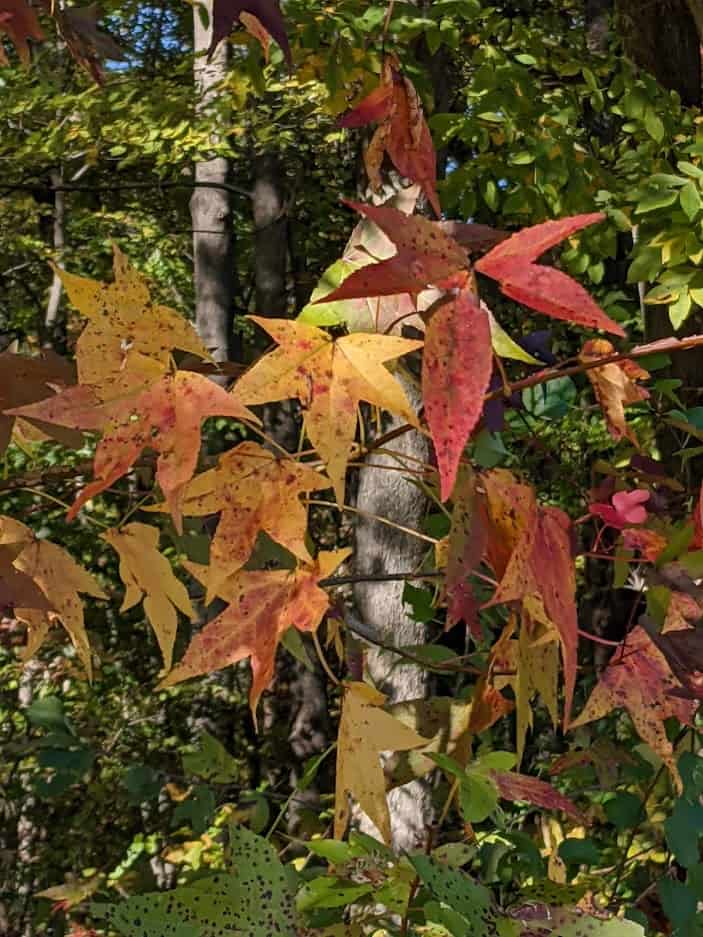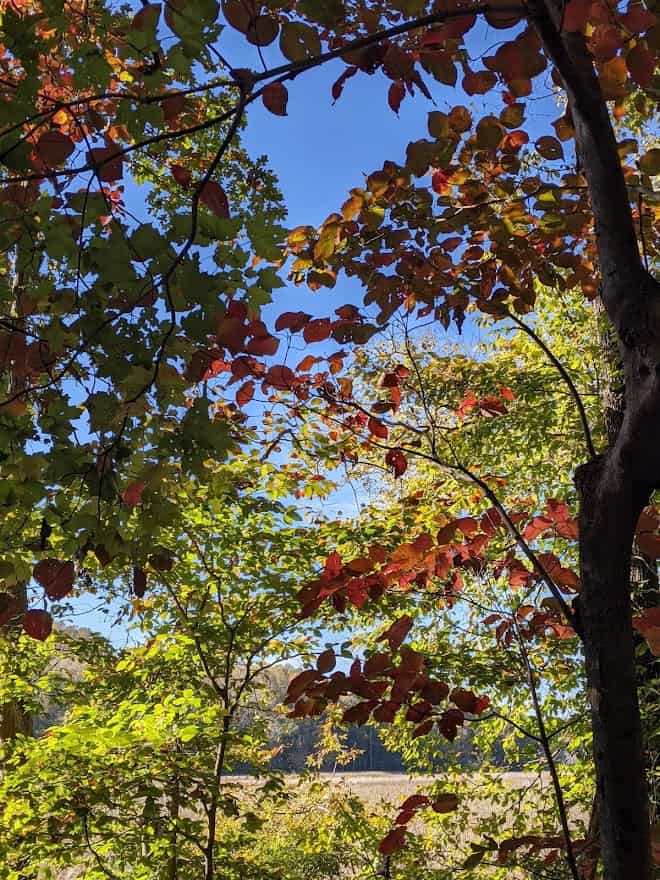Fall in the Forest



Master Naturalist Liz Orlandi identifies leaves on a fall hike at ACLT.
A Foliage Hike at the American Chestnut Land Trust
By Molly Weeks Crumbley
“It’s the beginning of The Great Recycling!” announced Liz Orlandi as she led a group of hikers through the forest.
On a brisk November morning, 25 hearty souls gathered at the north trailhead of the American Chestnut Land Trust to enjoy a guided fall foliage walk led by Orlandi, a Master Naturalist. The group, all adults save for an intrepid 8-year-old and a teen celebrating her 13th birthday, was well equipped with walking sticks, hiking boots, cameras, and even a trail-ready wheelchair that could roll over roots and stones with ease.
ACLT is comprised of 3,400 acres surrounding Parkers Creek, an area that stretches from Prince Frederick to Port Republic with community gardens and miles of walking trails, explained Community Relations Manager Miriam Gholl. When asked which trails offer the best fall color, Gholl enthusiastically recommends, “ALL OF THEM! There are a few trails that have stands of evergreen trees, but for the most part, you’re surrounded by deciduous trees on any trail you hike.”
There are certainly plenty of trails to choose from; the upcoming additional of new trails in December will mean 24 miles’ worth. Though ACLT hasn’t been able to host guided hikes for the past two years, volunteers were excited to be able to bring back the popular fall foliage hike.
The hike followed the Turkey Trail, one of the more popular routes at the ACLT. The mile-long Turkey Trail was established as a tobacco road in the 1800s, and it is now a great walk for hikers of all abilities that culminates in a scenic view of Parkers Creek. Along the hike, Orlandi paused at key moments to educate the group about the different types of trees that they spotted along the way. In just one mile, participants observed a staggering number of species: hickory, pawpaw, white oak, red oak, holly, poplar, sweet gum, beech, black walnut, ironwood hornbeam, sycamore, and dogwood.
Though hikers can visit the ACLT trails any time free of charge, the guided hike offered valuable opportunities to ask questions. Did you know that you can make delicious ice cream with pawpaw fruit? That it can take 50 years for an oak to produce acorns? That the sweet gum tree is a favorite of chickadees? That only female holly trees have berries? That the pigment from black walnut husks makes a great natural paint? That Maryland’s state tree, the white oak, is a keystone species in the local ecosystem? That instead of pulling out the rake, it’s better to “leave your leaves” on the ground to serve as wildlife habitat over the winter?
Leaving the leaves, Orlandi explained, is part of nature’s self-recycling. Deadfall from autumn leaves acts as a safe space for insects and animals to stay in through the winter, particularly for pollinators. Those benefits aren’t limited to wildlife either; leaves are free mulch that eventually break down into compost that provides nutrients for next year’s garden.
So enjoy the colors of the season both on the trees, and then as Mother Nature’s composting gift.
Editor’s note: Missed out on a fall hike? You can still sign up for a foliage hike at the Smithsonian Environmental Research Center in Edgewater this weekend (10am, Sat. Nov. 13) with the Scenic Rivers Land Trust. Scenic Rivers staff will lead a guided hike through the Contee Farm portion of the SERC campus, which is forever protected by a conservation easement co-held by Scenic Rivers and Maryland Environmental Trust. You’ll enjoy beautiful fall colors and stunning views of the Chesapeake Bay. Plus, there will be fall treats and coffee on hand to kick off the hike. All ages welcome, but please be aware that you will hike on unpaved trails through woods and fields. Pets are not permitted and closed toe shoes are required on the SERC campus. Length: 2-4 miles. RSVP: srlt.org.
